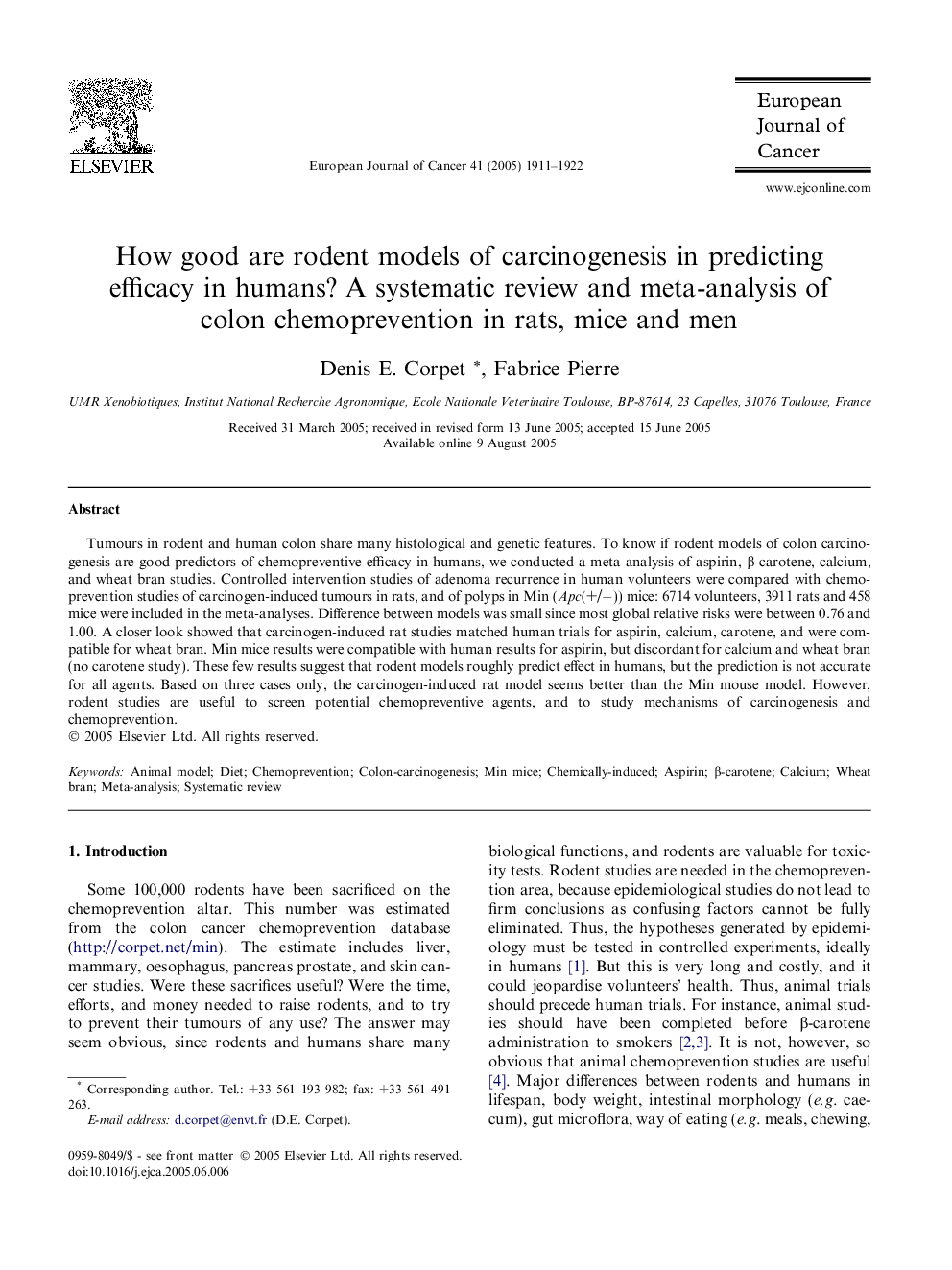| کد مقاله | کد نشریه | سال انتشار | مقاله انگلیسی | نسخه تمام متن |
|---|---|---|---|---|
| 2125150 | 1547298 | 2005 | 12 صفحه PDF | دانلود رایگان |

Tumours in rodent and human colon share many histological and genetic features. To know if rodent models of colon carcinogenesis are good predictors of chemopreventive efficacy in humans, we conducted a meta-analysis of aspirin, β-carotene, calcium, and wheat bran studies. Controlled intervention studies of adenoma recurrence in human volunteers were compared with chemoprevention studies of carcinogen-induced tumours in rats, and of polyps in Min (Apc(+/−)) mice: 6714 volunteers, 3911 rats and 458 mice were included in the meta-analyses. Difference between models was small since most global relative risks were between 0.76 and 1.00. A closer look showed that carcinogen-induced rat studies matched human trials for aspirin, calcium, carotene, and were compatible for wheat bran. Min mice results were compatible with human results for aspirin, but discordant for calcium and wheat bran (no carotene study). These few results suggest that rodent models roughly predict effect in humans, but the prediction is not accurate for all agents. Based on three cases only, the carcinogen-induced rat model seems better than the Min mouse model. However, rodent studies are useful to screen potential chemopreventive agents, and to study mechanisms of carcinogenesis and chemoprevention.
Journal: European Journal of Cancer - Volume 41, Issue 13, September 2005, Pages 1911–1922